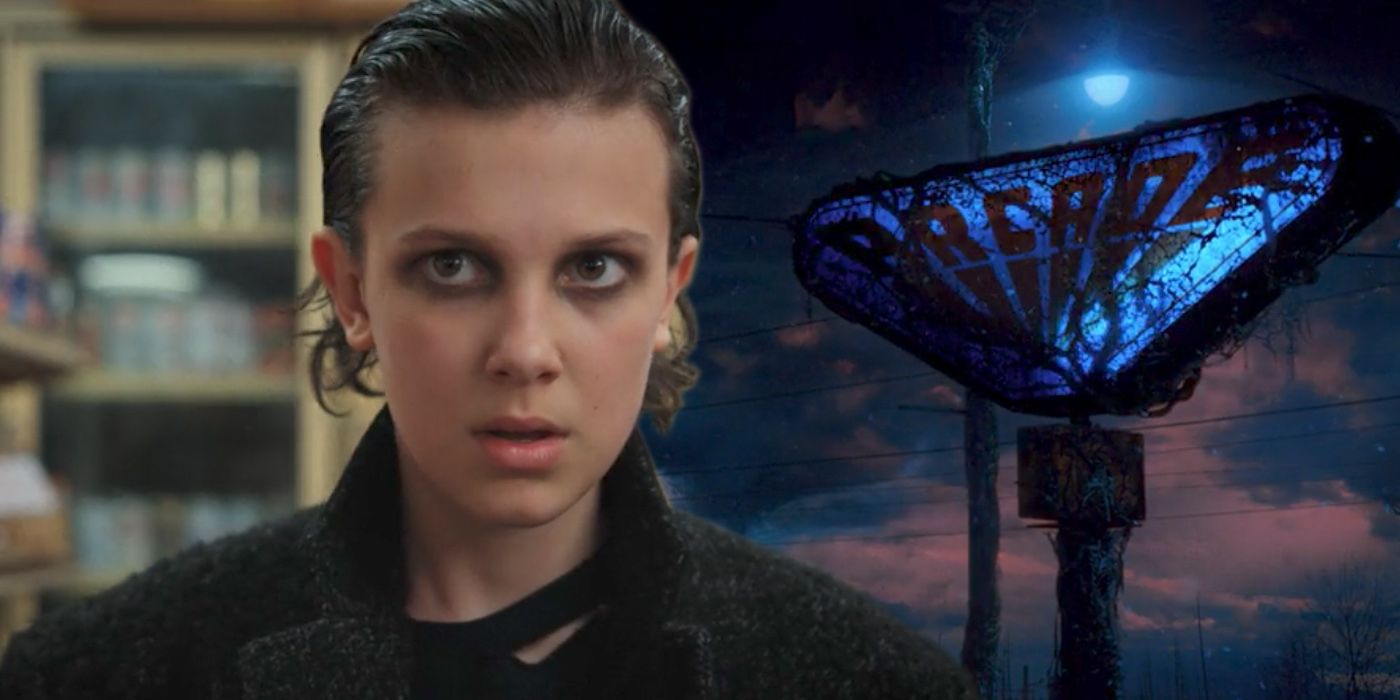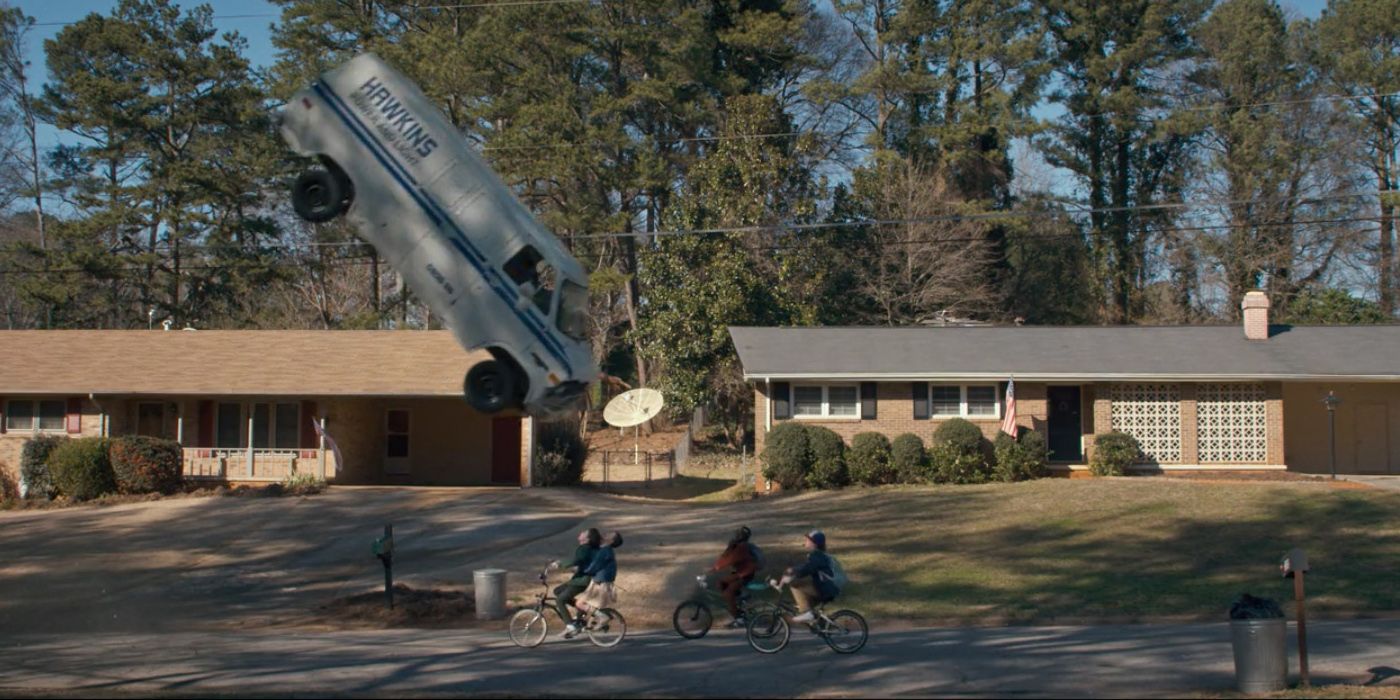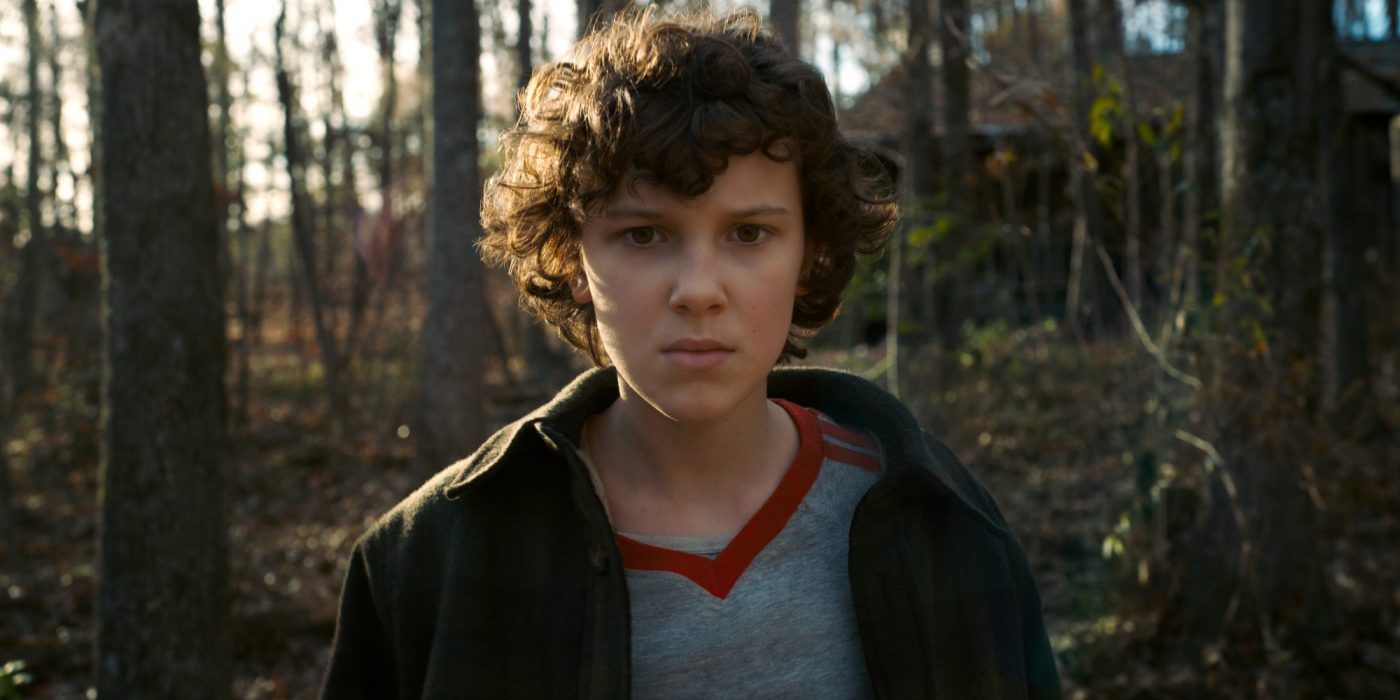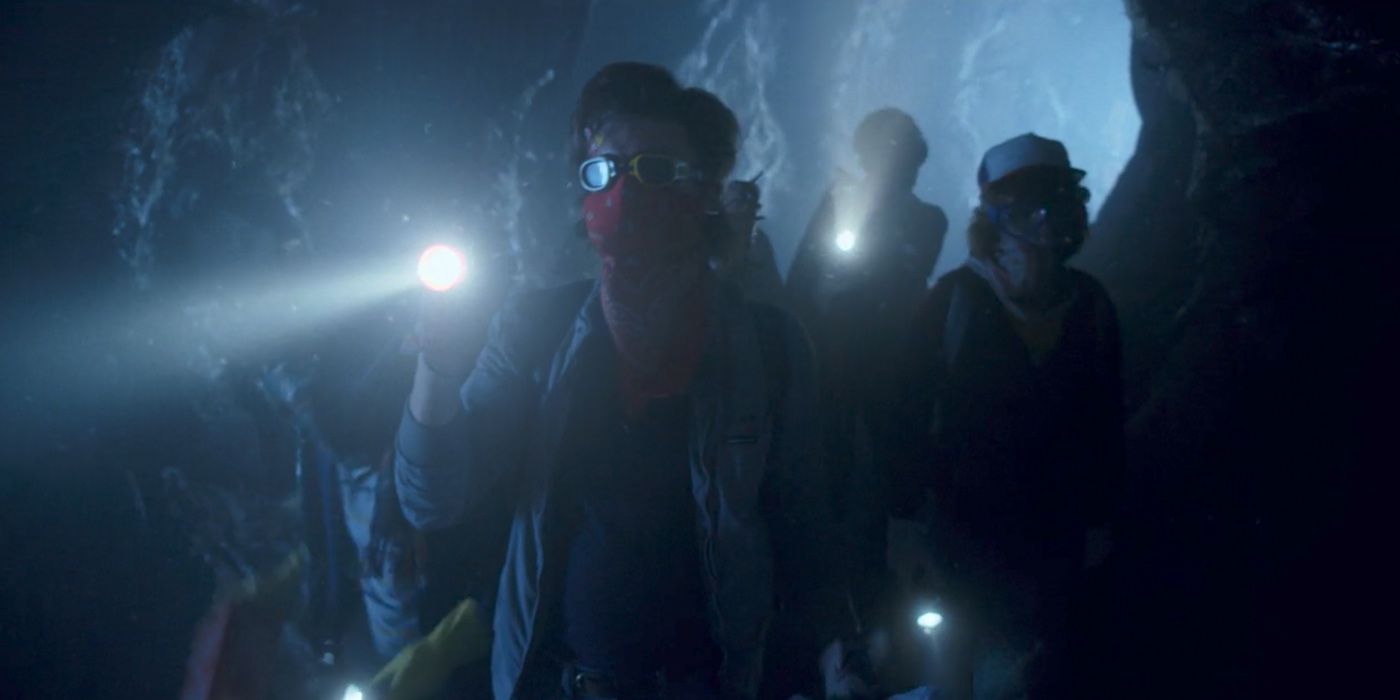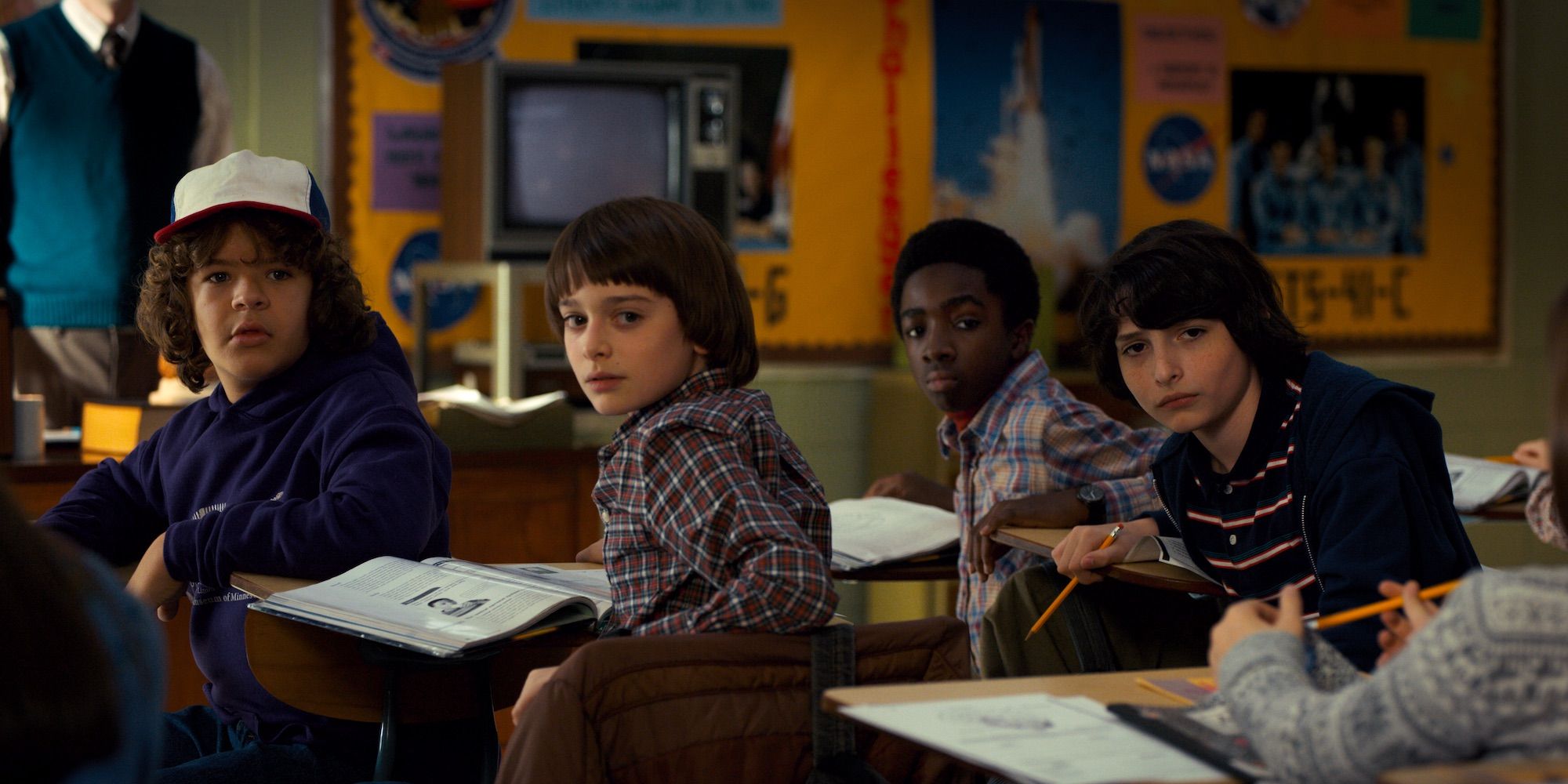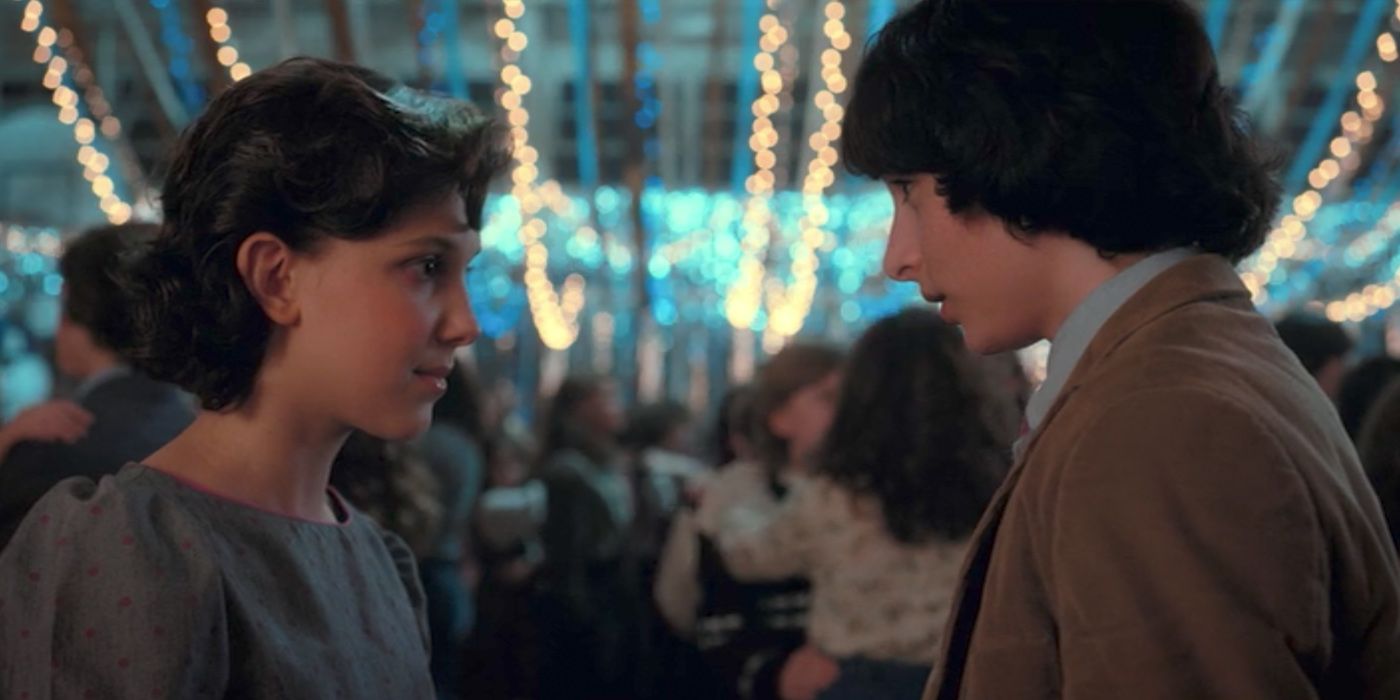Stranger Things is back with a second season that isn't just better than the first, but one that manages to correct the show's overly-aggressive nostalgia problem.
When Season 1 of The Duffer Brother's genre mashup was first released in July 2016, it was to little fanfare. That's certainly not the case for Season 2; after becoming the breakout TV hit of 2016, Netflix's headline series returns as a bonafide cultural phenomenon. Now, the show became so big in no small part thanks to the first season being a genuinely enjoyable eight hours of televsion, although in the fifteen months of hype since we may have lost sight of some of its damaging flaws.
One of the major selling points of the first season (before word-of-mouth kicked in and everyone realized it was just plain good) was the 1980s nostalgic mixtape aspect; this wasn't just a show set in the 80s, it was a show set in pop culture's 80s. The visuals, the music, the opening titles and even the writing felt straight out of Stephen King/Speilberg. More than that, though, Stranger Things was full of overt references and callbacks to the media its audience grew up with. Some of it was in-universe - a reference to X-Men comic here, a The Thing poster there - but a good amount was within the text itself: homage.
Related: Things You Completely Missed In Stranger Things Season 2
Now, homage is a very powerful creative tool that, done right, can elevate a film, show, book, game or other. Star Wars and the entire work of Quentin Tarantino wouldn't exist without the repurposing of ideas and images (and that's nothing of how Pixar and The Simpsons adopt classic cinema to the point it becomes funny in a new context). Closer to Stranger Things, It Follows is a new-age Halloween, which was itself taking liberally from giallo and Psycho. Crucially, what all those examples have is the offer of something more. They're not just replaying what came before, they're twisting or evolving it to tell a new story. The same couldn't quite be said of Stranger Things 1.
Stranger Things' Season 1's Nostalgia Mistake
Of course, Stranger Things' astute nostalgia awareness made it immediately accessible, but the deeper you got, the more the show seemed to fall back on simply calling out famous scenes of a fondly-remembered movie and hoping audience enthusiasm would carry it forward. Will trying to burst through the wall a la Poltergeist/Nightmare on Elm Street, the Demogorgon's Alien-esque facehugger, the constant hammering that Eleven is an E.T. parallel; they were all more reference than they were Stranger Things moment. It's a strange mixture of metatextuality and text, one that never felt fully in tune; there's a massive difference in effect between embracing a 1980s setting with nods to pop culture by the characters and trying to remake said pop culture in the media itself.
Things reached their epoch in Season 1's seventh episode. Eleven flipping the CIA truck over the boys on their bikes should have been the series' defining moment, but because the entire sequence around it was so clearly aping E.T.'s chase scene - and this section specifically the film's most striking image of the flying bikes - it felt little more than derivative. The whole run was full of relatable characters and a believable world, yet often when trying to pay things off we just got a redo of something we saw decades ago. You can bring to mind Stand By Me all you want, but if you're simply showing friends on a journey along train tracks without taking it to any formed conclusion - Stand By Me was all about the permutability of friendship - then it's not enough.
Read More: Stranger Things' Real-Life Conspiracy & Occult Connections
This lack of substance to individual moments grew to hurt the greater whole. Stranger Things 1 at first presents itself as a mystery drama: where is Will, where does Eleven come from, what is the facility? Those questions drove the plot forward. The immediate suggestion is that Will is in an alternate dimension and Eleven came from the facility that was involved in telekinetic experimentation akin to MK Ultra. The twist? There isn't one: Will was in an alternate dimension, Eleven was from the facility and they were experimenting with telekinesis. The only subversion of expectation was that instead of being akin to MK Ultra, it was just straight up MK Ultra. The entire plot, even the parts not clearly lifted for cult sources, was predictable from Episode 2, but the show acted like it was always hiding something.
You can say the throwbacks are a distraction to this, or that they're the point and the narrative is purposely obvious because it's just filler, but either way it wasn't a harmonious flow. Stranger Things was a remix of things you knew, but never quite did enough to fully stand by itself; look at how its biggest meme - Justice for Barb - came from the mocking of a fundamental oversight.
Don't take this as a damning takedown of the first year. As already stated, it was overall pretty good - you don't become an unexpected smash without getting multiple things right - and nailed a lot in terms of feel. Its wonderful characters and world were simply underserved by these showcase moments. Thankfully, Season 2 doesn't just address this, it adds so much more.
Why Season 2 Is Less Nostalgia-Obsessed
Now, nobody's going to say Season 2 doesn't have a lot of pop culture reference moments. It's full of that. You have the meta-textual casting of Sean Astin and Paul Reiser, a Halloween night full of Ghostbuster and slasher villain costumes and, yes, homage aplenty: Will being freed of the Shadow Monster by way of firestick is straight up The Exorcist, Steve taking the kids into the tunnels is obviously The Goonies, Bob in the facility chased by Demodogs nods to Jurassic Park, and there's so much more besides.
However, in Stranger Things 2 the irritating, obsessive recreation beats are simply not as prominent and gel more in the show's world. Pivotal moments with clear inspiration that last year would have been eye-rollingly obvious - Bob telling will to confront the fear in his dreams is pure The Nightmare on Elm Street - never feel reductive, rather genuine. Even when the Demodogs go all Aliens on the Hawkins facility, it feels like Demodogs and Hawkins, not xenomorphs and Hadley's Hope. In the words of last year's other horror-themed breakout star, Season 2 is "it's own thing."
Indeed, there's an overall reduction in the nostalgia obsession across the show's construction. Things 2 is no less 80s than its predecessor, but from its mind-wiping car chase opening where the money-shot is a tattooed number on an unknown character's arm, it's clear the show is evoking for its own benefit rather than remixing to cover up cracks. You can spot the references, but they're more background Easter eggs than the core viewing experience.
Related: Stranger Things: The Burning Questions We Have After Season 2
And this is all the result of an increased confidence in the characters. In Season 1, the Duffers had no way to know how viewers would react to the kids, the teenagers, the adults or the nefarious science whizzes and so doubled-down on what they knew people did like: classic movies. Now that Stranger Things is a hit and it's clear pretty much every character is loved in equal measure, they can go full force into them and not worry about the superficial flash. Aside from meaning we don't get condescending nudge-nudge shorthand to create key sequences, this leads to one hell of a tapestry; plainly stated, this is one of the best ensembles ever.
With that stronger grounding, you could probably have the-twist-is-there's-no-twist plot of Season 1 and it still feel complete, but along with confidence in character comes confidence in world. The plot of Stranger Things Season 2 is the evolution of a homage. It's got its specific inspirations and callback beats, yet overall does something focused with its mystery - and it is a mystery, with unknowns and unexpected turns that feel unique to what the show's built.
None of this is an accident. Stranger Things 2 is incredibly self-aware. Obviously, there are the fandom references - getting justice for Barb's death is Nancy's whole arc and winds up having the most concerted impact on wide Hawkins, while several characters wink towards the nostalgic nature (Max even calls Lucas' story derivative) - but the Duffer Brothers also seem to have tried to address the more substantive criticisms, among them the reference bonanza. The result isn't perfect - some of Season 1's irritating timeline flubs remain and the children have an uncanny knack for guessing what's going on with the Upside Down straight away - but, upping their game and fixing, they altogether made Season 2 into something truly great.
Much has been made how this is really a nine-hour sequel rather than a conventional "Season 2". Now, that sort of phrasing tends to be more about trying to elevate a TV show to the level of cinema, misunderstanding the different mediums earn respect in different ways, but in this case it feels apt. Stranger Things 2 is a complete story, one that follows on from the first and leaves room for more, yet is only ever in service of itself. The result is something truly special.
What Is Season 2 Really About?
Season 2 taking all of the cast and giving them similarly weighted arcs means we get a web of complicated, conflicting relationships (heck, there's a trio of love triangles). The result is a deep dissection of how friendships - and the people within them - develop and change with time and pressure. Of course, front-and-center there's the heartfelt message of being yourself. Season 2's core emotional set pieces hinge on the sense of being an outsider - Will fears being "weird", Max's integration into the group - who, lest we forget, are the nerds of their class - and, of course, Eleven's entire arc to find a place where she belongs - and their resolution is always acceptance. "Friends don't tell lies" et al.
But that was in the first season too - what the second adds to its exploration is a growing awareness of maturity. This isn't a perfect world where simply admitting you like Dungeons and Dragons sorts everything, nor does repenting previous ills set you on a conflict-free track. Look at Steve. Once the school tough guy, he not only goes introverted about the flaws in his relationship with Nancy, but also has to become a punished protector figure for the younger heroes; an entire episode is dedicated to him and Dustin form an unexpected double act.
Dustin is a revelation on his own. Given prominent positioning in reaction to his popularity after Season 1, with him we get both a look at how tight-knit groups can fray and the brutal truth of romance; Max (a perfect example of exterior cool making way to winsome and how external presences alter existing situations) is the apple of his eye, yet he gradually begins to see flaws in the infatuation and loses the love triangle to Lucas, at the ball dancing with Nancy after further rejection. And in those last moments, with a little help from his dancing partner, he grasps how the passage of time will alter everything.
Read More: Stranger Things 2 Balances Bigger Scope With Personal Stories
We could be here all day, but suffice to say each of the characters has such a natural yet thematically clear arc - Will comes to terms with being Zombie Boy, Nancy decides who she really wants to be with, Eleven realizes it's normality she craves, Joyce and Hopper share one more cigarette behind the school, Max stands up to her brother and finds comfort in her new friends - that all plays into the melancholic real world of Hawkins. You could never get that with all the nostalgic hangups - you needed the show to, like its characters, be happy with what it is.
The final words of the season are between Eleven and Mike. He asks her dance, she says she doesn't know, to which he responds, "I don't either. Do you want to figures it out?" Obviously it's a lovely cap to their arc that sees them fighting to be together, but at the end of everything we've discussed (especially considering how the pair's relationship was achingly in the background) speaks more of the whole uncertainty of life. Things don't always stay in their rigid status quo, and we find ourselves spinning off in completely unexpected directions with people we never thought; a lesson that pretty much every character learns in some form. It's an honest approach to growing up at any stage of life that frames the supernatural season in a wistful light.
The compounded result is just amazing. It's one thing to have a group dynamic that reminds you of Stand By Me. It's another to, purely within the childhood setting no less, present that film's recollective conclusion. But, damn, does Stranger Things 2 do it.

